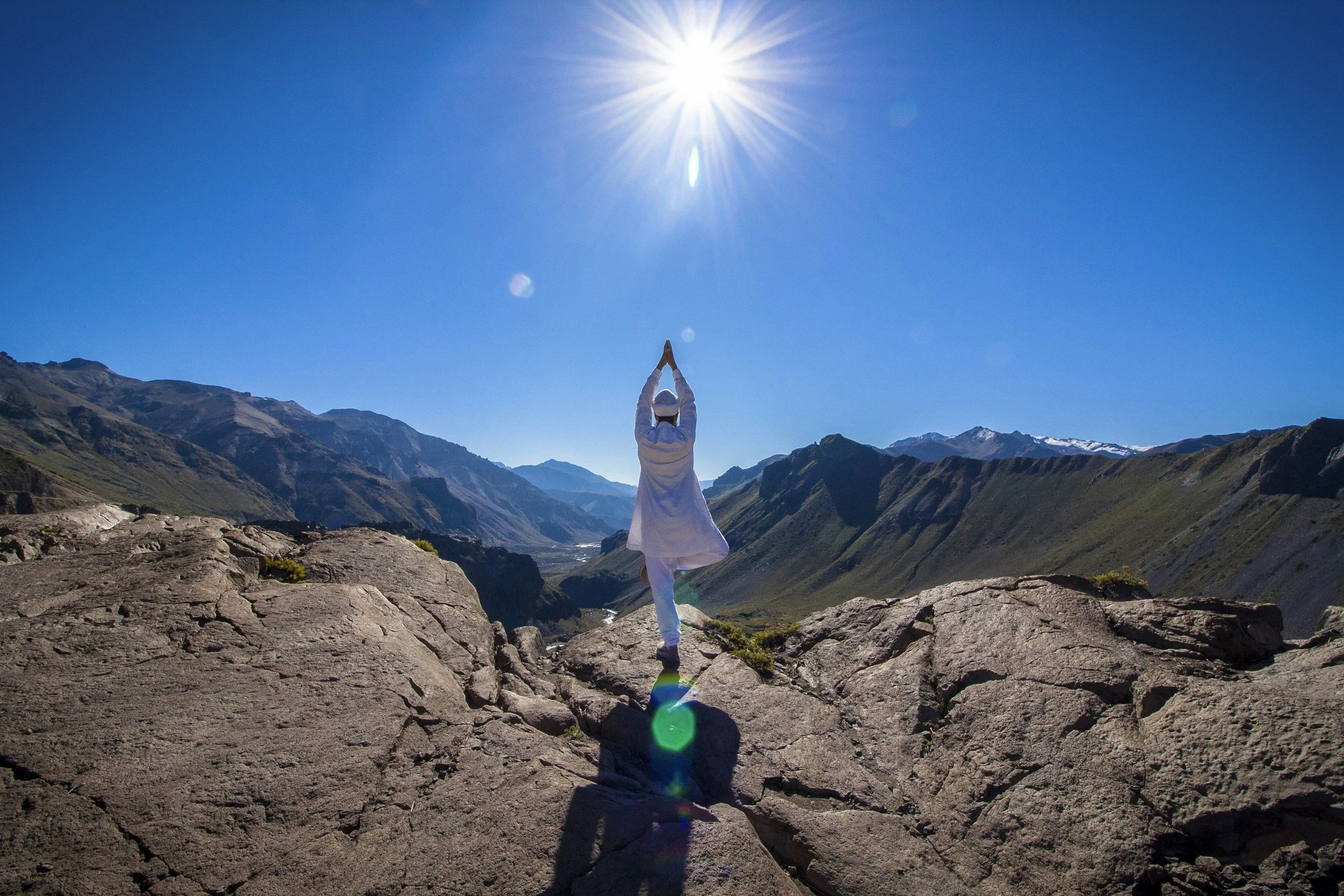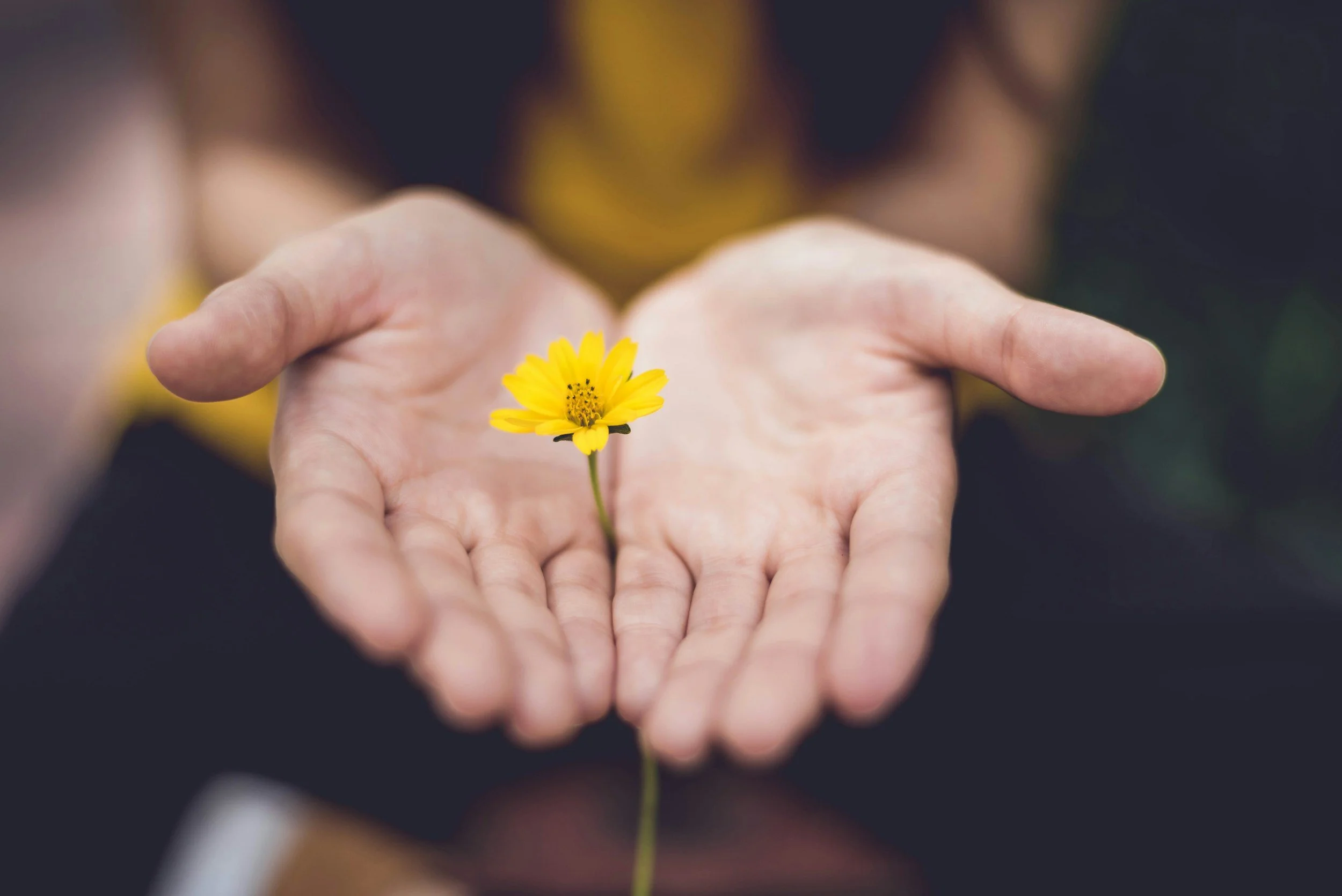
Kundalini Yoga for Deep Healing & Balance
Integrating Kundalini Breathwork, Meditation, and Movement in My Courses and Retreats
Kundalini Yoga and Meditation for Healing
When I first discovered Kundalini yoga, it felt like finding a missing piece in the puzzle of my life. I was fortunate enough to experience Kundalini yoga for the first time in LA with one of the most famous teachers in the world, Gurmukh, at the Golden Bridge Centre New Year’s event. I was 21 years old, and life was never quite the same again. Whilst the immediate feedback from my friend was that after two hours of this practice I looked ‘high”, the deep effects unfolded over the course of the next few years, as Kundalini quickly became a big part of my life, and in many ways the start of my true healing journey and deep transformation.
Kundalini yoga has become an integral part of my retreats and online courses because of how powerfully it supports both physical and emotional well-being. It’s not about twisting yourself into impossible shapes. It’s about working with your body’s energy system, using breath, sound, and gentle movement to restore balance from the inside out.
For anyone struggling with PMDD, chronic stress, fatigue, hormonal imbalances, or pretty much any sense that something isn’t quite right with them or their lives.. Kundalini can be a game-changer—simple yet deeply and profoundly effective.
What Is Kundalini Yoga?
Kundalini yoga is often called the “yoga of awareness.” Unlike many yoga styles that focus mainly on physical postures, Kundalini combines breathwork (pranayama), movement, meditation, and sound to activate and balance energy within the body.
The word Kundalini refers to dormant energy that lies at the base of the spine. Through specific techniques, this energy gradually rises through the body’s energy centres, bringing clarity, vitality, and a sense of deep calm.
What Does Kundalini Yoga Involve?
A typical Kundalini session weaves together:
Kriyas: Structured sequences of movement, breath, and mantra, each designed for a specific outcome—such as calming anxiety, improving digestion, or balancing hormones.
Pranayama: Breath techniques like alternate nostril breathing and “breath of fire” to regulate the nervous system.
Mantra and Chanting: The vibrational sound current profoundly affects the brain and nervous system, reducing stress and improving focus.
Meditation and Mudras: Simple hand gestures combined with breathwork to influence mental clarity and emotional resilience.
This isn’t about flexibility or aesthetics. It’s about energy and nervous system balance. And it’s highly adaptable—even if you’re managing fatigue, chronic illness, or pain.
The Science Behind Kundalini Yoga
While Kundalini may sound mystical, its effects are well-studied in neuroscience and psychophysiology. Research shows that Kundalini practices:
Reduce stress and anxiety: By activating the parasympathetic nervous system, lowering cortisol, and calming the amygdala.
Improve mood and resilience: Studies link Kundalini meditation to increased serotonin and improved emotional regulation, even in people with depression.
Enhance brain health: Mantra and breathwork stimulate regions involved in memory and focus, supporting neuroplasticity.
Support hormone balance: By reducing stress load on the hypothalamic-pituitary-adrenal (HPA) axis and improving vagal tone, which influences reproductive hormones.
In short, Kundalini yoga doesn’t just make you feel relaxed—it changes the way your nervous system and brain respond to stress, which has ripple effects on every system in your body.
How Kundalini Supports Health and Healing
This practice isn’t just for “zen vibes.” It can be tailored to specific health concerns:
PMDD and Hormonal Imbalances: Certain kriyas target endocrine health, nervous system regulation, and emotional stability—crucial for PMDD, PMS, and perimenopause.
Digestive Health: Stress is a major trigger for IBS and bloating. Kundalini breathwork helps restore gut-brain harmony by shifting the body out of fight-or-flight mode.
Chronic Fatigue and Autoimmune Issues: Gentle sequences boost energy without overexertion, ideal for those with limited capacity.
Mental Health: Evidence-based Kundalini meditations can significantly reduce anxiety and depressive symptoms within weeks.
I’ve seen clients use as little as 3 minutes of breathwork daily to help reduce PMDD-related rage and anxiety. Sometimes the simplest tools offer the greatest impact.
Kundalini Yoga in My Retreats and Online Courses
When I design a retreat or program, my goal is always to create whole-body healing. That’s why Kundalini yoga and meditation feature alongside naturopathic guidance, plant-based nutrition, and trauma-informed practices.
Here’s how I weave it in:
Morning Practice: Gentle kriyas and breathwork to set a grounded tone for the day.
Hormone-Specific Sequences: Short, focused sets to support nervous system repair and hormonal balance.
Meditation for Emotional Healing: Mantra-based meditations to calm the mind and soothe stress patterns.
You’ll never be thrown into anything overwhelming. Everything is accessible, guided, and trauma-informed.
Why I Include Meditation and Breathwork
You can drink green smoothies until the cows come home (or until the oat milk runs out), but if your nervous system is stuck in stress mode, your body will keep sounding the alarm. Breathwork and meditation work at the root—teaching your body to shift into safety and repair.
When I combined diet, herbal medicine, breathwork and trauma processing during my own healing from panic attacks and PMDD, the difference was profound. Suddenly, it wasn’t just about managing symptoms; it was about creating inner calm and resilience that carried into every part of life.
Is Kundalini Yoga for Everyone?
Yes—with the right guidance. If you’re managing trauma, chronic illness, or fatigue, there are ways to modify everything. You don’t need to be “fit,” flexible, or spiritual to start. All you need is curiosity and an open mind.
Every session I offer is trauma-informed, paced gently, and designed to feel safe.
Ready to Experience Kundalini Yoga?
If you’d like to explore this powerful practice as part of your healing journey, here are a few ways to start:
Join a Retreat in Bali – immersive experiences with daily Kundalini sessions, naturopathy, and plant-based nutrition.
Explore My Online PMDD Transformation Program – includes guided Kundalini practices you can do at home.
Meet Camilla
15 years wellness industry experience, 7+ years clinical practice
BHSc Naturopathy, Sydney
GradCert Human Nutrition, Melbourne
Systemic Family Constellations, Australia
Emotional Mind Integration, Australia
Rapid Core Healing, Australia
Advanced Systemic Constellations Training: Business, Health and Relationship Constellations, Australia
Raw Living raw food trainings, London & Iceland
Gabor Mate Compassionate Enquiry Short course
Kundalini Yoga Teacher 220 hours London (2012)
Kundalini Yoga Teacher Level 2 training Iceland & Los Angeles (2013)
Reiki Level 1 & 2 (2006), Brighton UK
SIBO Mastery Training
and more..
What people are saying..
In case you were wondering..
-
Kundalini focuses on energy, breath, and meditation rather than physical flexibility, though it can help with this too. It uses kriyas (specific sequences) to create a powerful impact on the nervous system and emotional balance.
-
Yes. Certain kriyas and meditations support endocrine health, reduce cortisol, and improve mood regulation—all crucial for PMDD, PMS, and stress-related hormone issues.
-
Absolutely. The sequences can be modified to suit all fitness levels. You don’t need experience to start.
-
These practices activate the parasympathetic nervous system, calming stress responses, improving hormone balance, and supporting emotional resilience.
-
No. A mat and a quiet space are enough. Optional: a cushion for comfort.































